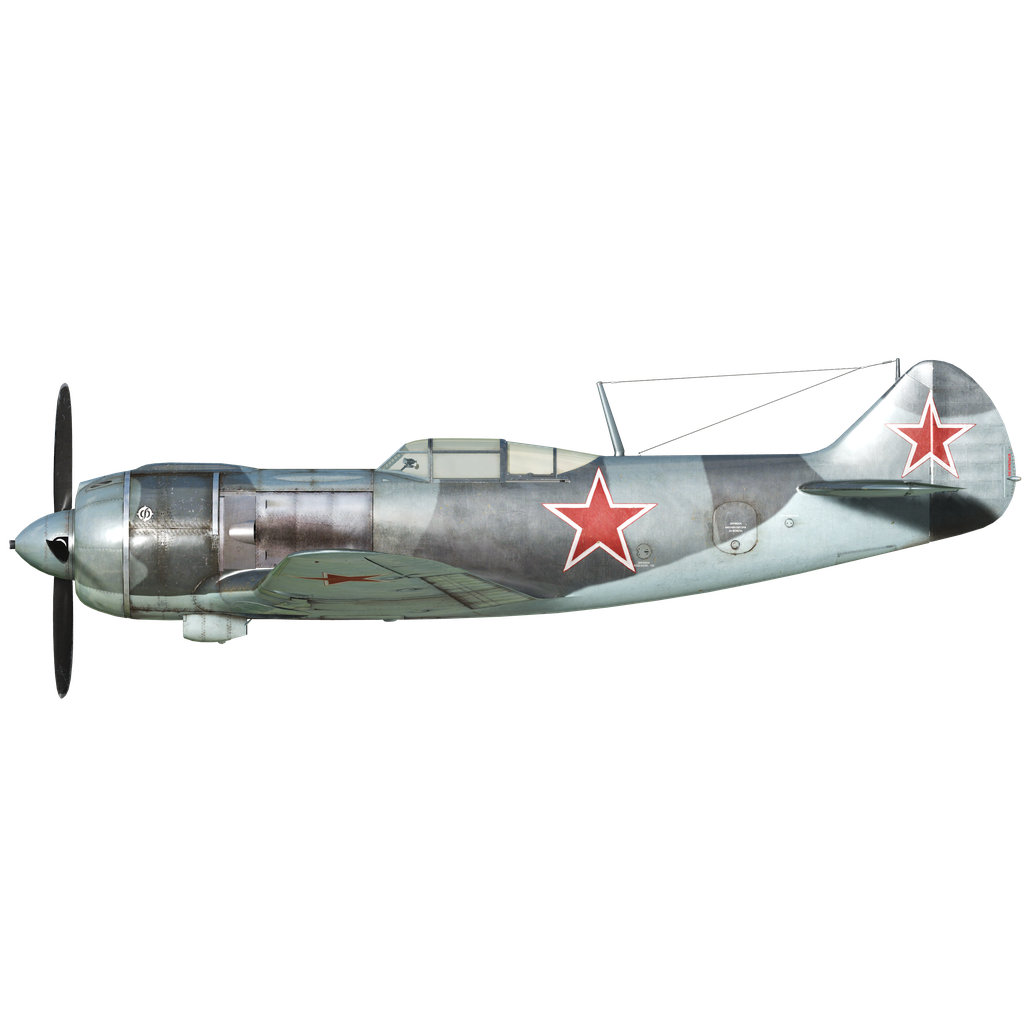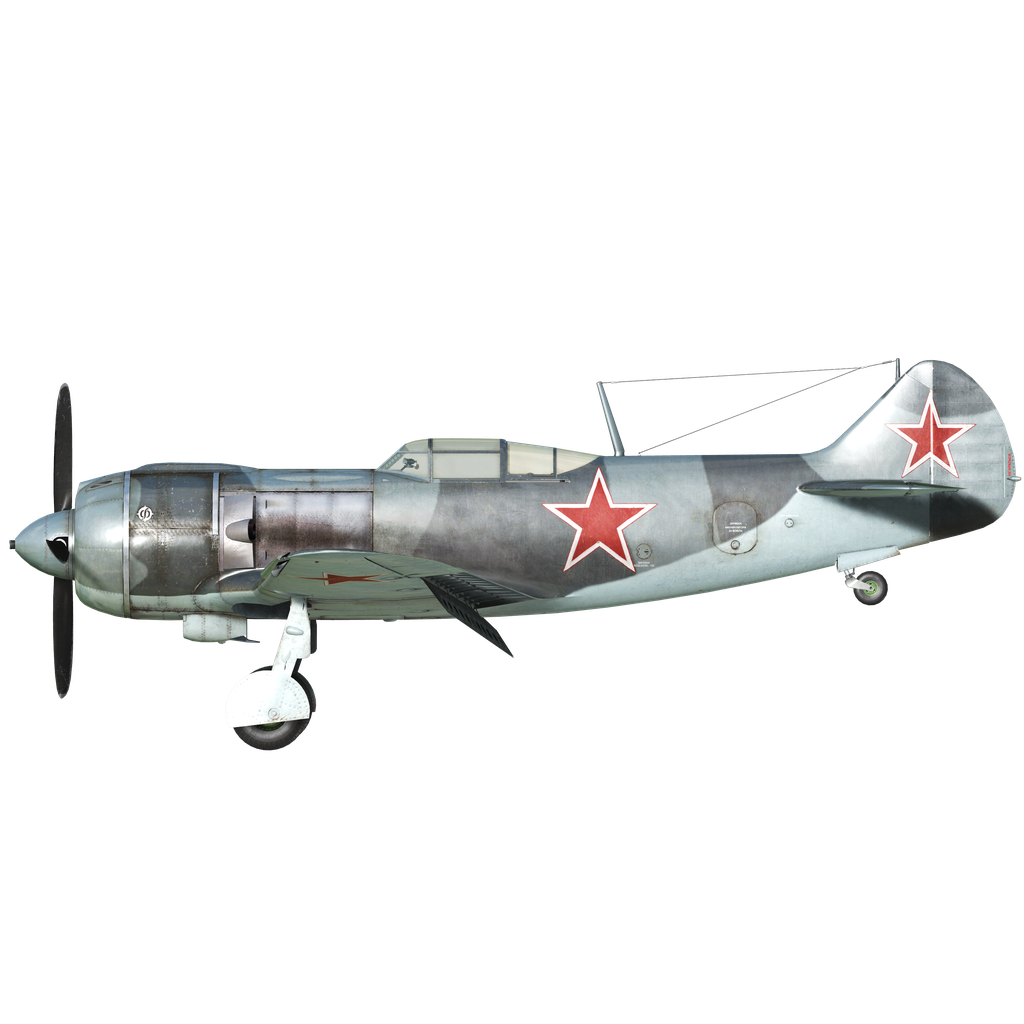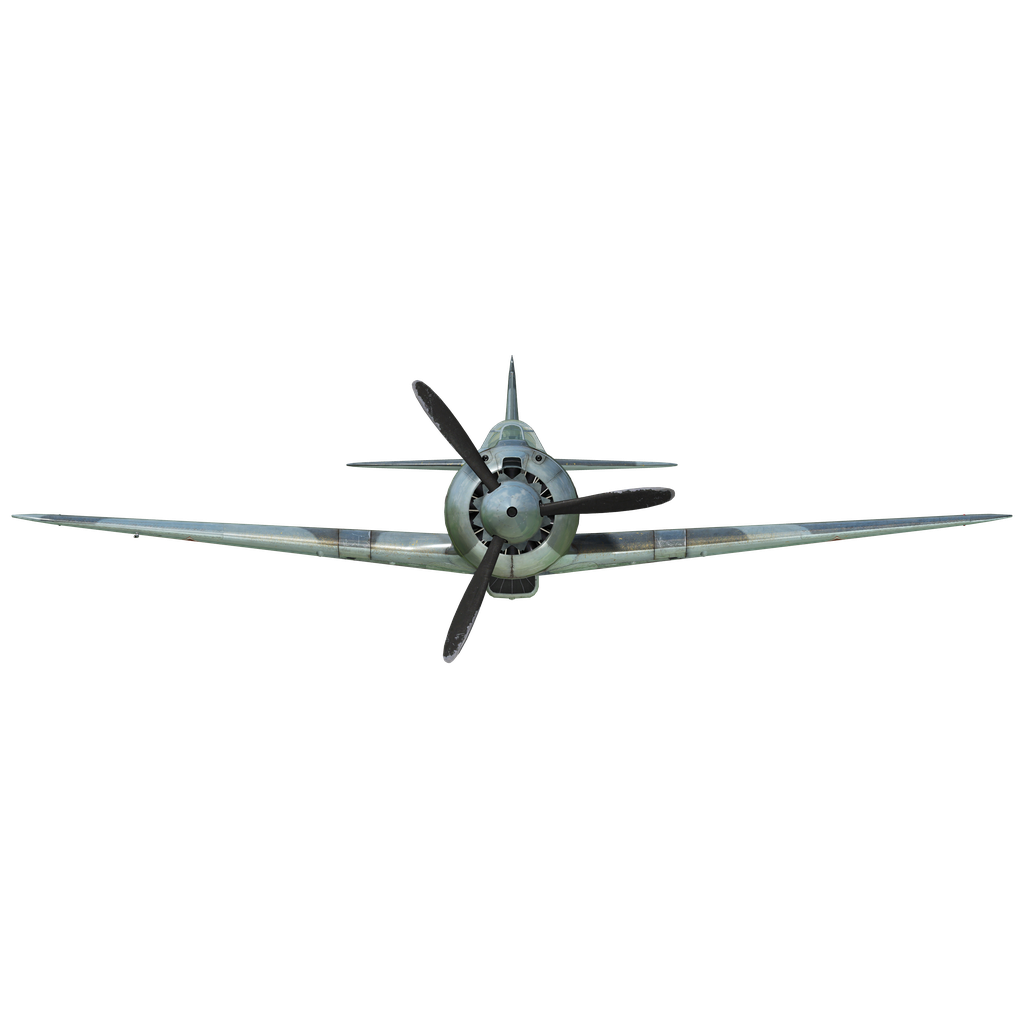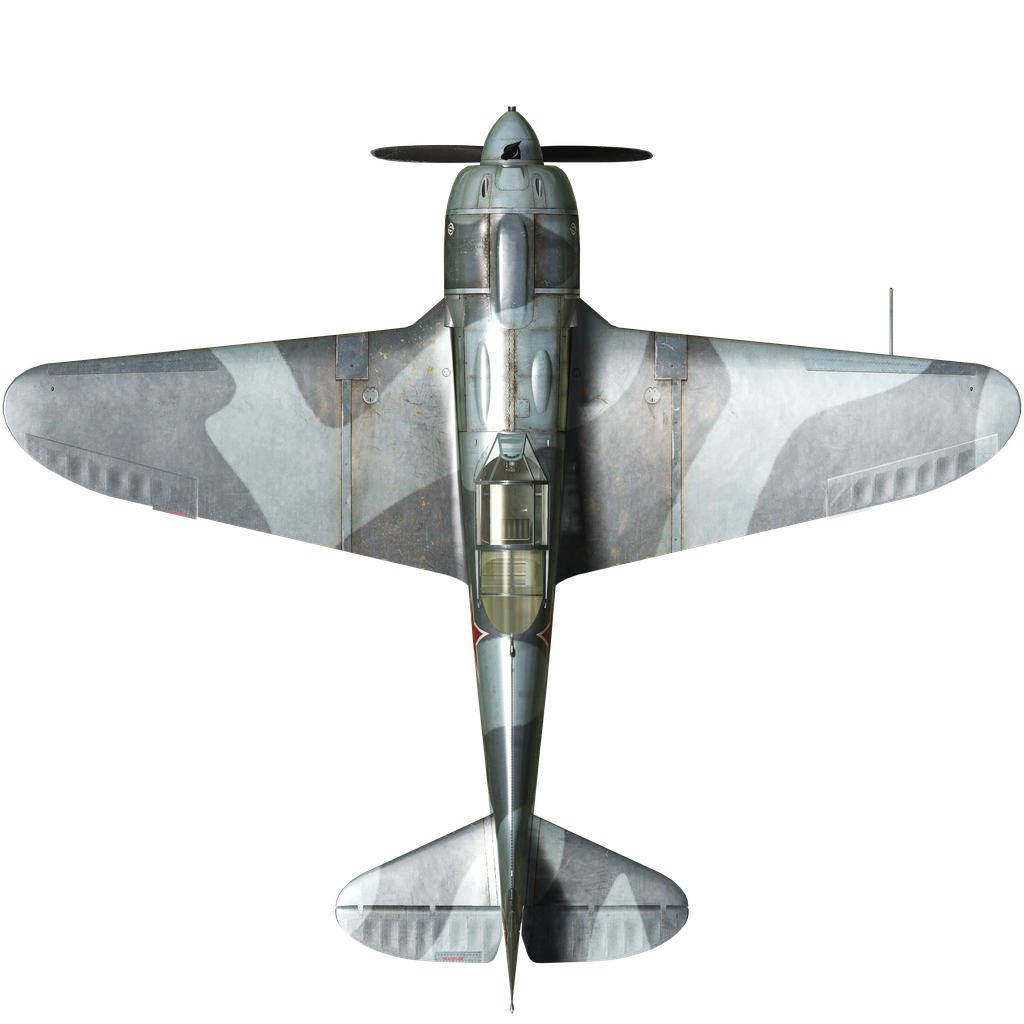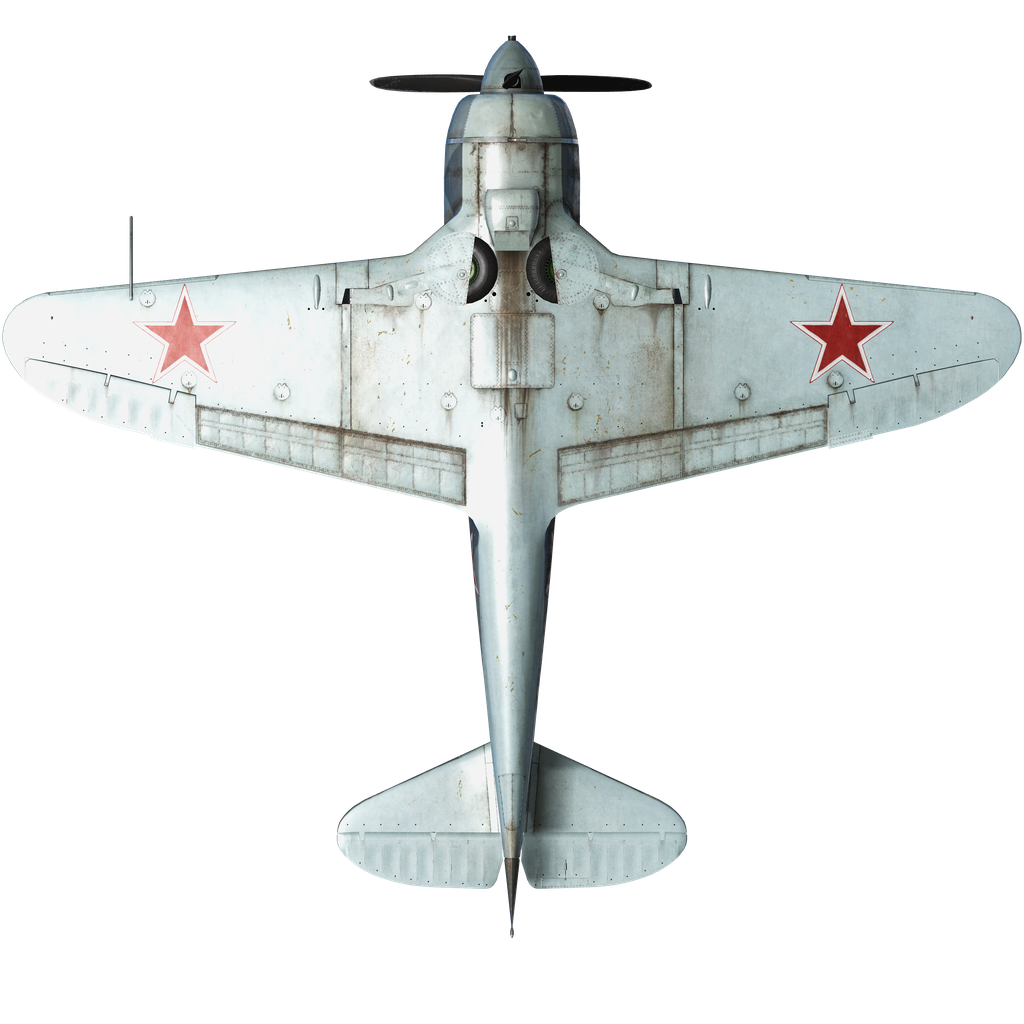The La-5 fighter was introduced in 1942 when a more powerful Shvetsov Design Bureau M-82 air-cooled engine was installed instead of a water-cooled engine on the airframe of the LaGG-3 fighter. The reasons for this are simple: the LaGG turned out to be heavier than the Yak, and the engines on the fighters were the same. At the same time, after the Su-2 was phased out, a large number of M-82 engines were produced for it, and their installation promised an increase of 300 hp. and increased survivability when bullets and cannon shells hit the engine. Although the drag of the aircraft increased due to the larger center section of the engine, the increase in power offset the increase in drag, allowing for greater speed and climb rate.
However, the La-5 was inferior to the Bf 109 F-4 and Bf 109 G-2 in both horizontal speed and climb rate, according to military tests and the participation of La-5 aircraft in combat.
The La-5 of the thirty-eighth series or La-5F was a single-engine wooden low-wing aircraft. Like the LaGG-3 and earlier La-5 modifications, the main structural material of the airframe was pine. Delta wood was used for the wing spars and some frames. The wooden parts of the aircraft were glued together. The fuselage consisted of a metal front truss and a wooden monocoque that was made in one piece with the tail. To achieve a certain speed, the sealing of the canopy and the firewall was improved, play and cracks in the ailerons and rudders were eliminated, the external finish was improved, and the number of fuel tanks was reduced to three. The measures taken reduced the weight of the fighter and improved its maneuverability, especially in vertical flight. An important innovation was the installation of a new teardrop-shaped canopy with front and rear armored glass and the possibility of jettisoning the sliding part in case of emergency. Instead of a pneumatic-mechanical trigger, an electric firing mechanism was installed for the cannons: the trigger on the flight stick was replaced by a button. Other external differences include the appearance of two small air intakes in front of the windscreen, which provided the flow of cold air into the cabin.
The time limit of the M-82F engine in take-off mode was removed — essentially the boosted mode of 1,700 hp. became nominal. The armament still consisted of two synchronized 20 mm ShVAK cannons; if necessary, two bomb racks could be installed under the wing to carry 50 or 100 kg bombs.
La-5s played a limited role in the Kuban air battles, as the Red Army Air Forces mainly used other types of fighters there, including Yaks and Airacobras. However, at least one division armed with Lavochkins was transferred to this section of the front at the height of the fighting. The Battle of Kursk was the first major operation in which the La-5F and FN took part: the famous Soviet ace Ivan Kozhedub flew the La-5F. In mid-July, La-5s of the 63rd GIAP arrived from the Kalinin Front, where Alexey Maresyev, who had returned to duty after amputation of both legs, fought and won his first victory.
The La-5F at last had the chance to fight on equal terms with the Bf 109 G-2 and G-4 up to an altitude of 6 km. The vertical maneuvers of the La-5F and the indicated modifications of the Bf 109 were practically the same up to an altitude of 3.5 km; at higher altitudes, the advantage went to the Bf 109. However, by skillfully combining horizontal and vertical maneuvers, the pilot of the La-5F had the initiative in the dogfight up to an altitude of 4 km. Compared to the Fw 190 A-4 and A-5, the La-5F fighter had an advantage in speed and all types of maneuvers at the same altitudes. Thus, the La-5F was not inferior in its main characteristics to the enemy fighters at least in the whole range of altitudes where the air battles were mainly fought on the Eastern Front.
La-5s of the 38th series took part in the battles from 1943 to 1944 when they were gradually replaced by the more advanced La-5FN.
1. S. Ivanov “La-5” War in the air No. 69 2001
2. “La-5” magazine “Aircraft History” No. 1 2006
3. Materials from the site airwar.ru

